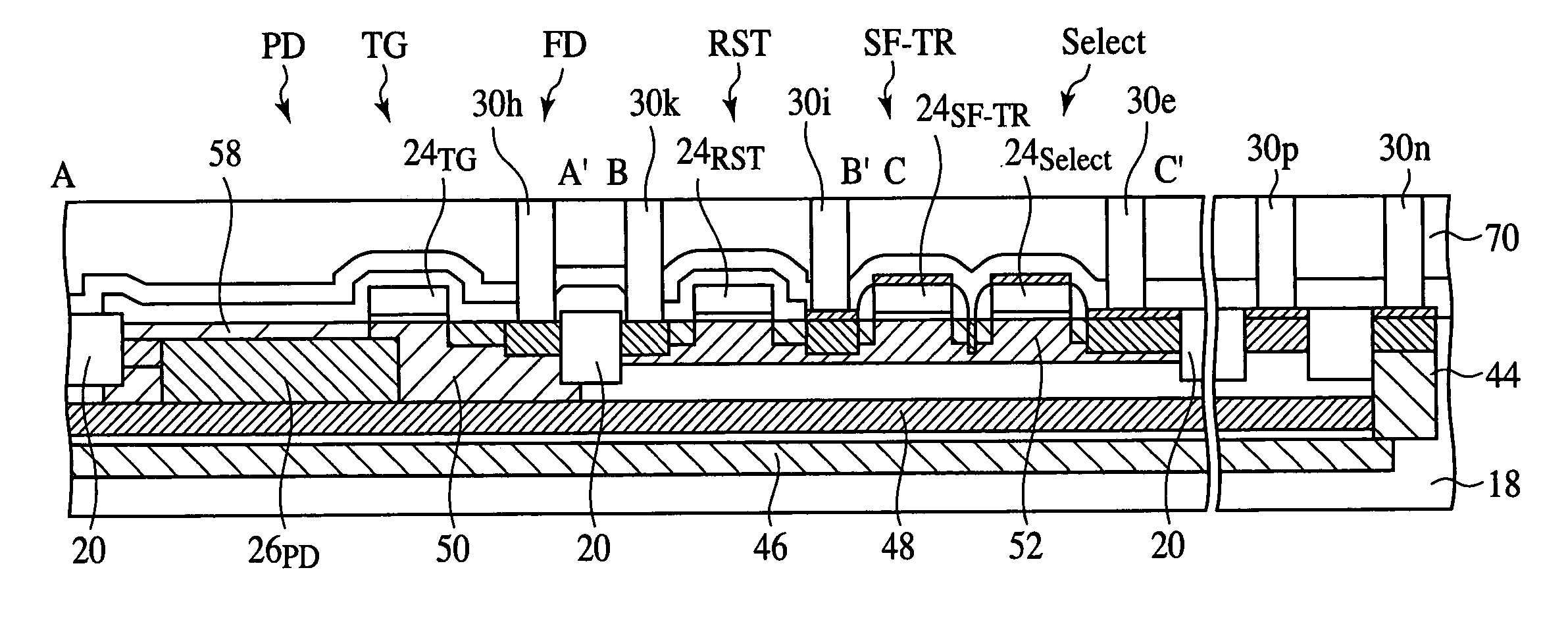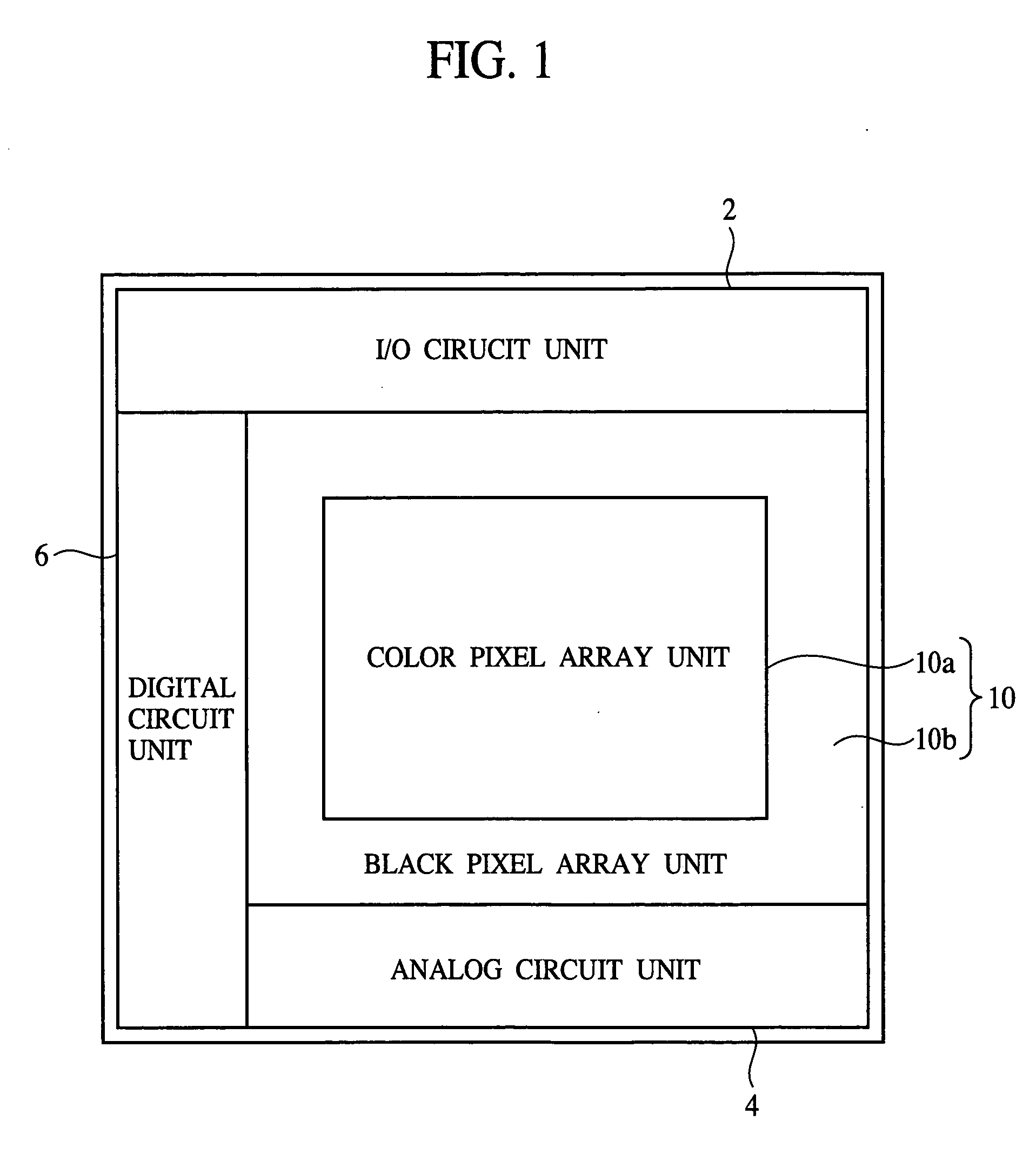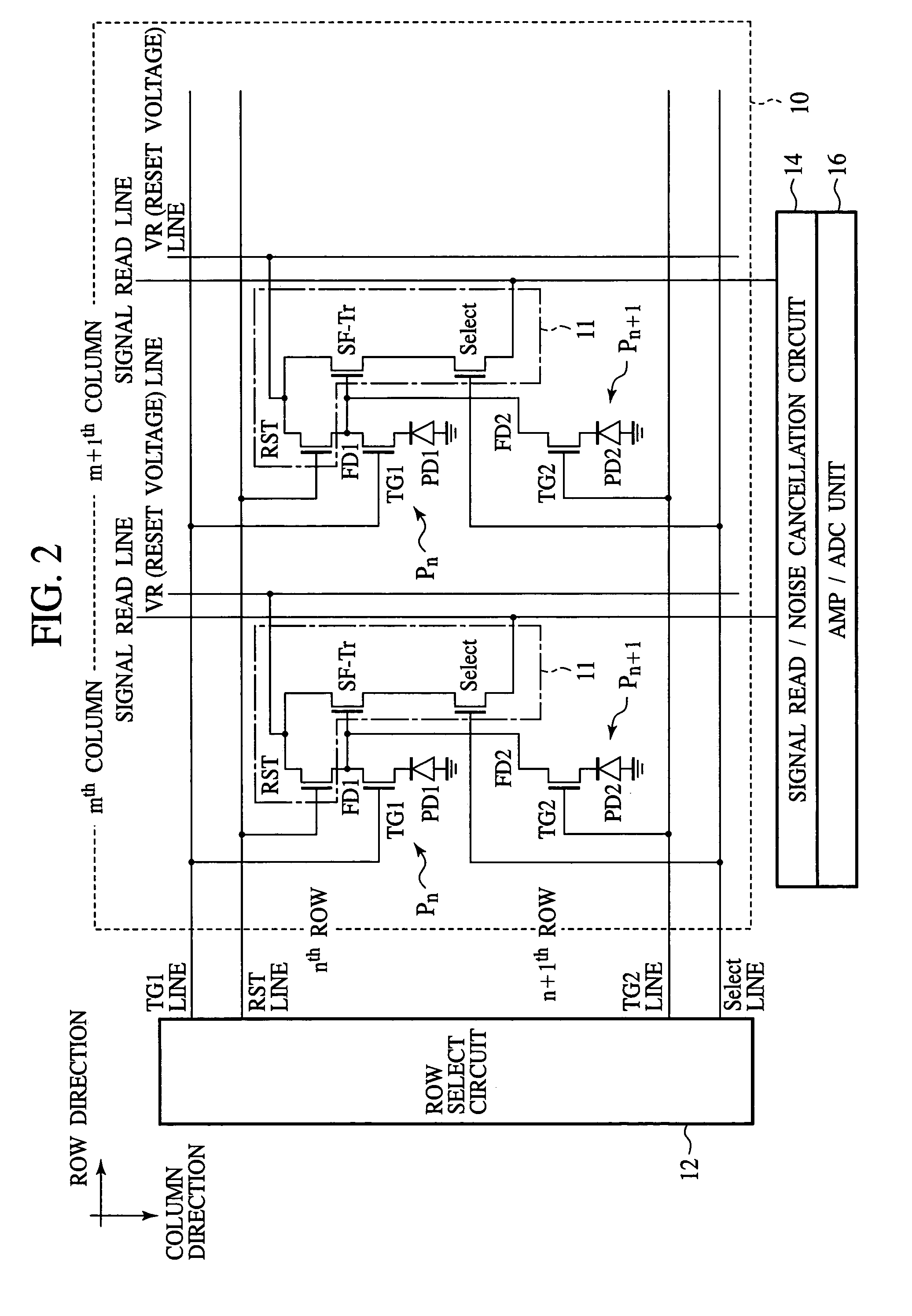Solid-state image sensor and method for fabricating the same
a solid-state image sensor and image sensor technology, applied in the field of solid-state image sensors, can solve problems such as operation defects, and achieve the effects of improving intra-plane uniformity, less fabrication fluctuations, and the same saturated charge amoun
- Summary
- Abstract
- Description
- Claims
- Application Information
AI Technical Summary
Benefits of technology
Problems solved by technology
Method used
Image
Examples
first embodiment
A First Embodiment
[0039] The solid-state image sensor and the method for fabricating the same according to a first embodiment of the present invention will be explained with reference to FIGS. 1 to 20.
[0040]FIG. 1 is a plan view of a chip image of the solid-state image sensor according to the present embodiment. FIG. 2 is a circuit diagram of the pixel array unit of the solid-state image sensor according to the present embodiment. FIGS. 3-6 are plan views of the solid-state image sensor according to the present embodiment, which show the structure thereof. FIGS. 7A-7B are diagrammatic sectional views of the solid-state image sensor according to the present embodiment, which show the structure thereof. FIG. 8 is a graph of depth-wise changes of the potential of the region for a photodiode formed in of the solid-state image sensor according to the present embodiment. FIGS. 9A and 9B are views of the extension of the depletion layer of the photodiode. FIGS. 10A-17D are sectional views...
second embodiment
A Second Embodiment
[0155] The solid-state image sensor and the method for fabricating the same according to a second embodiment of the present invention will be explained with reference to FIGS. 21A to 23B. The same members of the present embodiment as those of the solid-state image sensor and the method for fabricating the same according to the first embodiment shown in FIGS. 1 to 20 are represented by the same reference numbers not to repeat or to simplify their explanation.
[0156]FIGS. 21A and 21B are diagrammatic sectional views showing a structure and the method for fabricating the same of the solid-state image sensor according to the present embodiment. FIG. 22 is a graph of a depth-wise distribution of boron forming a buried p-type layer. FIGS. 23A and 23B are views explaining distribution differences of the buried p-type layer made by slant ion implantation and by ion implantation normal to the substrate.
[0157] The solid-state image sensor and the method for fabricating the...
third embodiment
A Third Embodiment
[0175] The solid-state image sensor and the method for fabricating the same according to a third embodiment of the present invention will be explained with reference to FIGS. 24A to 25. The same members of the present embodiment as those of the solid-state image sensor and the method for fabricating the same according to the first and the second embodiments shown in FIGS. 1 to 23B are represented by the same reference numbers not to repeat or to simplify their explanation.
[0176]FIGS. 24A and 24B are diagrammatic sectional views of the solid-state image sensor according to the present embodiment, which show a structure thereof. FIG. 25 is a graph of depth-wise changes of the potential in the region for a photodiode to be formed in of the solid-state image sensor according to the present embodiment.
[0177] In the solid-state image sensor according to the first and the second embodiments, the buried n-type layer 26PD is formed under the same conditions for the photod...
PUM
 Login to View More
Login to View More Abstract
Description
Claims
Application Information
 Login to View More
Login to View More - R&D
- Intellectual Property
- Life Sciences
- Materials
- Tech Scout
- Unparalleled Data Quality
- Higher Quality Content
- 60% Fewer Hallucinations
Browse by: Latest US Patents, China's latest patents, Technical Efficacy Thesaurus, Application Domain, Technology Topic, Popular Technical Reports.
© 2025 PatSnap. All rights reserved.Legal|Privacy policy|Modern Slavery Act Transparency Statement|Sitemap|About US| Contact US: help@patsnap.com



